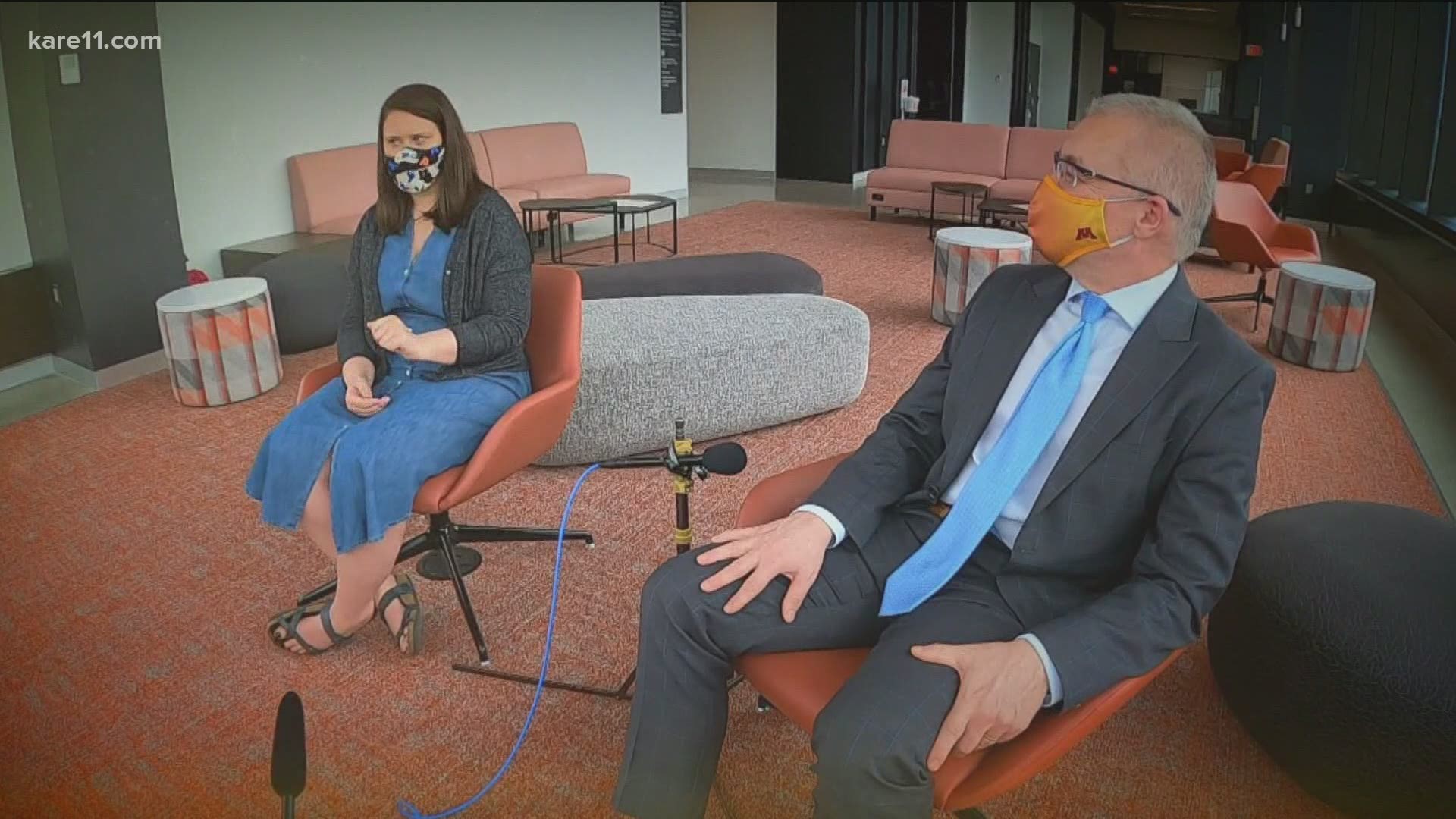MINNEAPOLIS — When Sophia Schmidt heard that there was a 40% increase in applications to the University of Minnesota Medical School during the COVID-19 pandemic, she could relate.
"Medical school is hard and just to get into medical school is hard, so it's nice to have those reminders of why this is important, what the impact of this is," Schmidt said.
For Schmidt, a second-year medical student, the pandemic didn't inspire her journey — but a life-changing diagnosis did.
"I was 12 years old, completely healthy, had no concerns," Schmidt said. "I went in for my normal physical, got some blood drawn just to check everything out and there were some kind of irregularities. My blood looked a little funky. Within two weeks, I was in an ambulance heading to Children's in Minneapolis. I was tired, I was filled with bruises, and we knew that something was wrong."
It was a story, and a diagnosis, Dr. Jakub Tolar knew well.
"It's called severe, aplastic anemia," Dr. Tolar said. "Aplastic means the stem cell elements that are making red blood cells and white blood cells and platelets that live in the bone marrow, they just went away."
Dr. Tolar told Schmidt and her family that her only option was a bone marrow transplant.
"I remember the things that he said, that this treatment is risky and it could kill you," Schmidt said. "But he told me that if you don't do anything you will die."
"If I were her, when I was 12, I would not be sitting here in front of you today," Dr. Tolar said. "It was a 100% fatal diagnosis."
But that fatal diagnosis is exactly what brought Dr. Tolar to the University of Minnesota.
"The reason why I rode across the Atlantic and came here, is that the bone marrow transplant — the first one ever, in the history of medicine — was done here," Dr. Tolar said.
Decades later, Dr. Tolar used his expertise to help Schmidt, who received a successful donation from her older brother.
"For about a year we were on high alert," she said. "It was like almost a precursor to COVID. I was wearing a mask all the time, I was isolated at home."
But during that time, Sophie was inspired by Dr. Tolar and the entire medical team. She set a goal to become a doctor herself one day.
A few years later, Dr. Tolar became Dean of the University of Minnesota Medical School, and she set her sights on Minneapolis.
"When he first became the dean, my grandma found out about it, cut the article out of the paper and sent it to me," Schmidt said. "She sent me a pre-addressed letter and was like, 'You're going to send this letter. Just let him know that you're applying. Just kind of put that in there,' I told her I sent it, but I never sent it because I didn't want it to seem like I was asking for anything."
That made it all the more satisfying, when the former patient finally reunited with her former doctor in 2019.
"At the white coat ceremony, where it's like you're officially inducted into medicine, I got to shake his hand," Schmidt said. "We exchanged a few words on the stage and I'll never forget that. Just to have that come completely full circle was amazing."
"It was beautiful," Dr. Tolar said. "I thought, this is a story that is bigger than either one of us."
Was he proud of his former patient?
"Oh, disproportionately so," he said. "I am enthusiastically proud. I am more proud than I can even express, because this is about meaning of the professional life and the personal life."
Schmidt says her future plans include a career in pediatrics, so she can help care for, and inspire, the next generation.
"When I look back on my transplant, and my time in the hospital and on my time following the transplant, it really strikes me how this could have been such a traumatic, horrible, terrible experience," Schmidt said. "But because of the support and the help from these people, I really don't see it that way. I see it as a positive change in my life, so I hope that I'm able to do that for other people."

